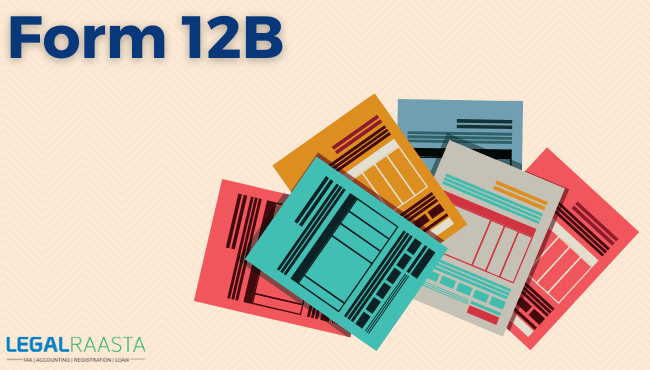Section 194N: TDS on cash withdrawals
For taxpayers who have not completed their income tax returns for the previous three years, the TDS threshold limit has been cut to Rs 20 lakh in Budget 2020. Taxpayers who withdraw money in excess of Rs 20 lakh must pay a TDS of 2%.To discourage cash payments, the Union Budget 2019 introduced Section 194N, which allows for the deduction of tax at source (TDS) on cash withdrawals exceeding Rs 1 crore.
What is the purpose of Section 194N?
If you withdraw more than Rs 1 crore in cash in a financial year, you’ll be subject to Section 194N. This section will apply to all sums or aggregates of monies withdrawn from a single-payer within a fiscal year. The section will apply to any taxpayer’s withdrawals, including:
- A single person
- An Undivided Hindu Family (HUF)
- A Business
- A limited liability partnership (LLP) or a partnership business
- A municipality is a government entity that governs a specific
- A group of people (AOPs) or a collection of people (BOIs)
- Any financial institution (private or public sector
- A cooperative financial institution
On any sum in excess of Rs 1 crore, the tax will be deducted by the payer while making a cash payment to any individual from a taxpayer’s bank account. The Rs 1 crore restriction each financial year applies to each bank or post office account, not to each taxpayer’s individual account.
A person with three bank accounts with three distinct banks, for example, can withdraw cash of Rs 1 crore * 3 = Rs 3 crores without paying any TDS. Any cash withdrawal made by a taxpayer from a recipient’s bank account will only be subject to TDS under Section 194N.
The recipient of the cash is not the account holder, but a third party in the instance of a payment made by a taxpayer through a cheque bearer issued to a third party in excess of Rs 1 crore in a financial year. In this instance, the bank does not make a payment to the account holder. In the foregoing scenario, it’s unclear if a bearer check handed to a third party (such as a vendor) to collect payment from the bank is protected under section 194N. Is the bank entitled to collect tax from the account holder’s funds in relation to the bearer cheque issued to a third party?
Separately, under section 40(A)(3) of the income tax act, payments paid with a bearer check are not authorised as an expense for business payments. Any payment made in a single transaction or in aggregate that exceeds Rs 10,000 per day is not recognized as a business expense.
The Rs 1 crore limit will apply to cash payments and withdrawals made in the fiscal year 2019-20. Payments made on or after September 1, 2019 will be subject to the provisions of Section 194N.
Why was this section introduced?
Section 194N was included by the government in the Union Budget 2019 proposal on July 5, 2019. The Finance Bill, 2019, introduced ‘Section 194N – TDS on cash withdrawals above and above Rs 1 crore’ to discourage cash transactions in the country and promote the digital economy.
Under Section 194N, who will deduct TDS?
TDS must be deducted by the individual (payer) who makes the cash payment under Section 194N. The following is a list of such individuals:
- Any financial institution (private or public sector)
- A cooperative financial institution
- There is a post office.
- There are some types of people (payees) who are exempt from the provisions of this section. They are as follows:
- Any governmental entity
- Any bank, including cooperative banks, is eligible.
- Any financial company’s business correspondent (including co-operative banks)
- Any bank’s white label ATM operator (including co-operative banks)
- Anyone else who has been alerted by the government
What does TDS have to do with Section 194N?
TDS shall be deducted by the payer when making cash payments to the payee in excess of Rs 1 crore in a financial year. If the payee withdraws money at regular intervals, the payer is required to deduct TDS after the total amount withdrawn in a financial year surpasses Rs 1 crore.
TDS will also be applied to amounts above Rs 1 crore. For example, if a person withdraws Rs 99 lakh in total in a financial year and then withdraws Rs 1,50,000 in the following year, the TDS responsibility is only on the excess amount of Rs 50,000.
TDS rate as defined under section 194n
Section 194N requires the payer to deduct TDS at a rate of 2% on cash payments/withdrawals of more than Rs 1 crore in a financial year. TDS on Rs 50,000 at 2%, i.e. Rs 1,000, would be deducted in the given scenario.
If the person receiving the money has not filed an income tax return in the three years prior to the current year, the tax deduction maximum is Rs 20 lakh. TDS is 2% on cash payments/withdrawals of more than Rs 20 lakh but less than Rs 1 crore, and 5% on withdrawals of more than Rs 1 crore.
Also, read
Section 194C- TDS (Tax Deducted at Source) on Payment to Contractors





